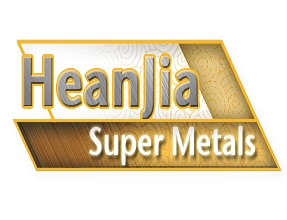You are here: home > Resistance Heating Wire Industrial News > What is inconel?
Product (287)
- FeCrAl Alloy Wire (11)
- FeCrAl Alloy Strip (11)
- FeCrAl Alloy Mesh (11)
- Nichrome Wire (11)
- Nichrome Strip (9)
- Nichrome Mesh (10)
- Resistance Wire (131)
- Resistance Strip (20)
- Stranded Resistance Wire (2)
- Cut-Straightened Wire (20)
- Heat Resisting Mesh (20)
- Applications (19)
- Technical Data (12)
Product catalog (4)
Company Certificates (5)
Resistance Heating Wire Industrial News (30)
Applications (30)
Electrical heating elements News (6)
Credit Report
Products Index
Company Info
Heanjia Super-metals Co., Ltd. [China (Mainland)]
Business Type:Manufacturer
City: Beijing
Province/State: Beijing
Country/Region: China (Mainland)
Resistance Heating Wire Industrial News
What is inconel?
Inconel is a registered trademark of Special Metals Corporation that refers to a family of austenitic nickel-chromium-based superalloys. Inconel alloys are typically used in high temperature applications. It is often referred to in English as "Inco" (or occasionally "Iconel"). Common trade names for Inconel include: Inconel 625, Chronin 625, Altemp 625, Haynes 625, Nickelvac 625 and Nicrofer 6020. Hereafter give the particular illustration of inconel.
I. Composition
Different Inconels have various compositions, but all are predominantly nickel, with chromium as the second element.
II. Properties
Inconel alloys are oxidation and corrosion resistant materials well suited for service in extreme environments subjected to pressure and heat. When heated, Inconel forms a thick, stable, passivating oxide layer protecting the surface from further attack. Inconel retains strength over a wide temperature range, attractive for high temperature applications where aluminum and steel would succumb to creep as a result of thermally-induced crystal vacancies (see Arrhenius equation). Inconel's high temperature strength is developed by solid solution strengthening or precipitation strengthening, depending on the alloy. In age hardening or precipitation strengthening varieties, small amounts of niobium combine with nickel to form the intermetallic compound Ni3Nb or gamma prime (γ'). Gamma prime forms small cubic crystals that inhibit slip and creep effectively at elevated temperatures. The formation of gamma prime crystals increases over time, especially after three hours of a heat exposure of 850-C, and continues to grow after 72-hours of exposure.
III. Machining
Inconel is a difficult metal to shape and machine using traditional techniques due to rapid work hardening. After the first machining pass, work hardening tends to plastically deform either the workpiece or the tool on subsequent passes. For this reason, age-hardened Inconels such as 718 are machined using an aggressive but slow cut with a hard tool, minimizing the number of passes required. Alternatively, the majority of the machining can be performed with the workpiece in a solutionized form, with only the final steps being performed after age-hardening. External threads are machined using a lathe to "single point" the threads, or by rolling the threads using a screw machine. Holes with internal threads are made by welding or brazing threaded inserts made of stainless steel. Internal threads can also be formed using EDM (Electrical discharge machining).
Cutting of a plate is often done with a waterjet cutter. Internal threads can also be cut by the single point method on a lathe, or by threadmilling on a machining center. New whisker reinforced ceramic cutters are also used to machine nickel alloys. They remove material at a rate typically eight times faster than carbide cutters. 718 Inconel can also be roll threaded after full aging by using induction heat to 1300°F without increasing the grain size.[citation needed] Apart from these methods, Inconel parts can also be manufactured by selective laser melting.
IV. Joining
Welding Inconel alloys is difficult due to cracking and microstructural segregation of alloying elements in the heat affected zone. However, several alloys have been designed to overcome these problems. The most common welding methods are gas tungsten arc welding and electron beam welding.
New innovations in pulsed micro laser welding have also become more popular in recent years.
V. Uses
Inconel is often encountered in extreme environments. It is common in gas turbine blades, seals, and combustors, as well as turbocharger rotors and seals, electric submersible well pump motor shafts, high temperature fasteners, chemical processing and pressure vessels, heat exchanger tubing, steam generators in nuclear pressurized water reactors, natural gas processing with contaminants such as H2S and CO2, firearm sound suppressor blast baffles, and Formula One and NASCAR exhaust systems.
It is also used in the turbo system of the 3rd Generation Mazda RX7, and the exhaust systems of high powered rotary engined Norton motorcycles where exhaust temperatures reach more than 1,000 degrees C. Inconel is increasingly used in the boilers of waste incinerators. The Joint European Torus vessel is made in Inconel. Inconel 718 is commonly used for cryogenic storage tanks, downhole shafts and wellhead parts.
Inconel is also used in the construction of higher end firearms sound suppressors and muzzle devices. This is especially common in suppressors designed to be especially small or for use with machine guns.
Inconel is also used for various liquid gas tanks in the Apollo space program, including the Oxygen tanks which were inspected after the Apollo 13 incident.
Rolled Inconel was frequently used as the recording medium by engraving in black box recorders on aircraft..
Alternatives to the use of Inconel in chemical applications such as scrubbers, columns, reactors, and pipes are Hastelloy, perfluoroalkoxy (PFA) lined carbon steel or fiber reinforced plastic.
Pre Page:
What is Kanthal?
Next Page:
FeCrAl heating wire
.gif)


